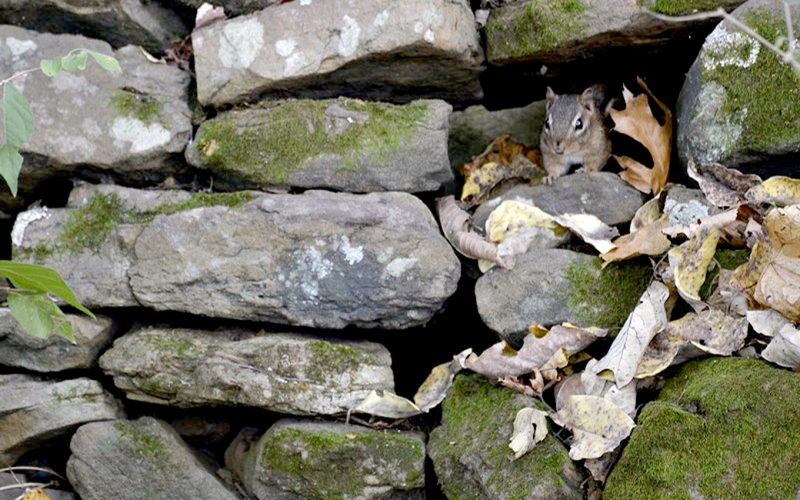
Staff Photo Amanda Bancroft
Historic stone fences like this one near Fayetteville are not as common in Arkansas as they are in New England, but one can find them throughout Northwest Arkansas even in remote wooded areas.
In the children’s book “Stone Wall Secrets,” Kristine and Robert Thorson write that “there are thousands of stone walls crisscrossing woods and fields as if they have been there forever. Each one has a story to tell, of farmers and oxen and hard, muddy work. Every stone also has an older story to tell, of the land itself, of mountains and glaciers, of soils and seas.” One stone wall in Massachusetts even inspired Ralph Waldo Emerson to publish Nature in 1836, the same year Arkansas became a state. Our local walls are hidden repositories of history and ecology.
Originally mud and sand from an ancient ocean that covered Arkansas, the rocks formed over eons of pressure and heat. These were thrust upward into mountains by the movement of tectonic plates. The mountains gradually eroded into smaller rocks and pebbles over time, carrying fossilized remains of extinct sea creatures and plant life. The movement of glaciers across North America at the end of the last ice age left long scars across some rocks, and some were scorched as tribal campfire stones that helped sustain ancient peoples.
Europeans cleared forested land for agriculture, causing the soil (which had built up and buried the rocks) to become exposed to erosion and colder temperatures. This encouraged deeply buried rocks to rise to the surface annually from frost upheaval. Each spring, farmers had to haul rocks out of the fields and carry them to the edges, where they were stacked to form property boundaries or pasture fences, or sometimes architectural art in front of farmhouses and around barns. Suddenly scarce timber was considered too valuable to use for fencing, while rocks got in the way of the plow and served a purpose as a fence or retaining wall. Nowadays, as forests in many areas have grown back, these stones can be very valuable as building materials bought from old farmsteads. But truly they are priceless.
While the labor of slaves, poor children, and Native Americans were sometimes used, much of these fences were built by white settlers and stone masons. Eureka Springs has an estimated 56 miles of stone walls built by stone masons between 1885 and 1910, according to one historical marker.
The stones that contain their “secret” natural history are also part of an ecosystem of tunnels, passageways and perches. Chipmunks have territories here, and many species stash their food inside crevices. Rabbits and rodents burrow underneath and around the wall, and seek protection from predators by darting to safety. Rainbow-colored skinks sunbathe on these rocks. Blackberry vines use them as trellises. A patient predator can find a snack in a stone fence, and birds and snakes often use them as hunting grounds. For more information, read Robert Thorson’s “Stone by Stone: The Magnificent History in New England’s Stone Walls” which contains decades of his life’s research, for which we are indebted.
Amanda Bancroft is a writer, artist, and naturalist building an off-grid cottage for land conservation on Mt. Kessler. She and her husband Ryan blog about their adventures and offer a solar-hosted online educational center on how to make a difference with everyday choices at: www.RipplesBlog.org.










